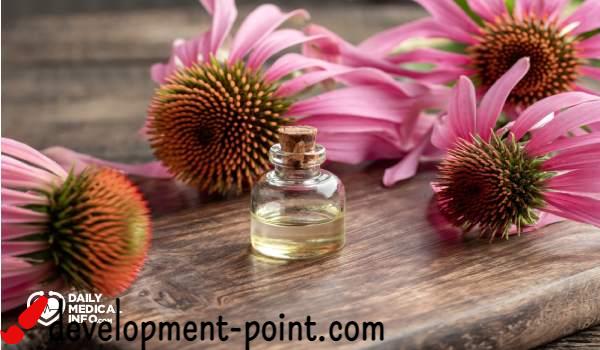Types of hair dyes: and important advice on use
The history of hair dyes dates back to ancient times, when some evidence was found of the use of hair dyes in the Pharaonic civilization and other civilizations. Today, the hair dye industry is one of the most powerful economic industries in the world. Using different types of hair dyes to change the color of the hair, and choosing the appropriate dye. It has become common for both women and men. However, it may carry with it some health risks. This is what we will discuss in this article.
The source of the original hair dye
Hair consists of two main parts, the hair follicle and the hair shaft. Where the hair follicle is located at the root of the hair. It attaches each hair to the scalp. While the hair follicle contains living cells, the hair shaft does not. Hair color comes from the pigment melanin, which is produced by hair follicle cells.
Types of hair dyes
When using dyes, they may remove the original hair color or add a new color to the hair shaft. And the types of hair dyes can be natural or synthetic.
Industrial dyes are divided into permanent, semi-permanent, and temporary dyes.
1- Types of permanent hair dyes:
It reaches deeper into the hair shaft. And it is resistant to shampoo. As it performs a set of chemical changes to increase the penetration of the dye into the hair. This causes the natural melanin to whiten and damage the hair. These products usually contain harmful chemicals such as ammonia and hydrogen peroxide. The darker the color of the dye, the higher its concentration. Which may lead to the risk of cancer.
And for permanent dyes too
Some studies indicated that this increases the risk of breast cancer for women compared to women who do not resort to such artificial dyes. Contact with the skin of these chemicals may cause skin redness, itching, sores, and burning. Therefore, gloves must be worn while using industrial hair dyes, to reduce toxins that may negatively affect the skin. Single-use gloves should not be worn more than once.
2- Semi-permanent dyes:
Semi-permanent dyes are used to add color to the hair, but they do not lighten it. And the color can be removed using shampoo from 4 to 12 times. Although, semi-temporary dyes also contain chemicals that may cause the removal of natural melanin. However, its damage is not as strong as permanent dyes.
3- Temporary dyes:
It coats the hair shaft with color, but does not penetrate the outer layer of the hair shaft. It can be easily removed by using shampoo 1-2 times. Where these types of pigments consist of water, organic solvents, and some other elements.
To learn more about natural hair dyes. Read this article: Natural hair dyes: the fastest methods and the best results
Dangers of industrial hair dyes
Among the risks of using some synthetic hair dyes are:
- hair loss: Frequent use of permanent dyes, which contain harmful chemicals such as ammonia and peroxide. It will result in hair damage and loss.
- An allergic reaction: As the types of industrial hair dyes contain paraphenyldiamine, which causes allergic reactions. So people with allergic skin diseases, may suffer a severe reaction. Therefore, it is advised to avoid using it in cases of any skin diseases such as eczema and psoriasis.
- increased asthma: Hair dyes contain sulfates. Which can cause an increase in asthma. As continuous inhalation of these harmful chemicals may cause coughing, pneumonia, and asthma.
Tips and cautions when using
If this is your first use of hair dye. Do a test by applying the dye to a small patch of skin. To ensure that no allergic reaction occurs when applying the dye to the hair.
- Leave the dye mixture on your hair for the specified period only on the product box. And do not exceed the specified time for your safety and the safety of your hair.
- I wear rubber gloves Or single-use when using hair dyes. But throw it away after use. This is to protect the skin from the danger of toxic chemicals, which are contained in the types of industrial dyes.
- Try to avoid getting the color on the scalp as possible. so that this does not cause internal chemical reactions, or risk of an allergic reaction. Therefore, it is preferable to separate the dye from the scalp using a brush or comb.
- Do not try to experiment with combining different types of tints. So that this does not result in serious health risks.
- The scalp should be rinsed well with water After completing the dyeing process.
- Do not attempt to use synthetic dyes to dye your eyelashes or eyebrows. Where it can permanently damage the eyes. It may cause blindness.
- Avoid bleaching. As a radical change in hair color. It will damage it like changing hair color from black to blond for example. So it is best when you need to make a drastic change in hair color. That the wigs be used to serve the purpose without damaging the hair.
- When choosing a dye color. You should choose a color close to the natural hair color. This will be more appropriate to reduce the contrast between skin color and hair color.
So it is better for you and your health. See the contents of the industrial dyes before purchasing them and make sure of the percentages of their chemical contents. It is also better to resort to using natural hair dyes. Because it does not contain any of the chemicals that can cause you health damage. You may be indispensable. Like hair henna.

